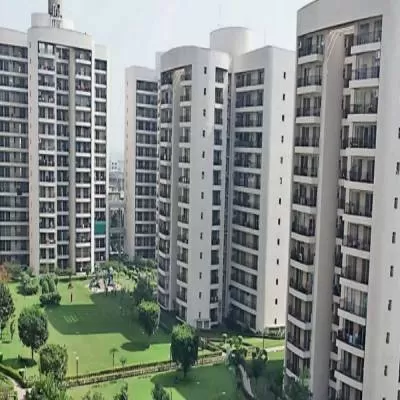- Home
- Real Estate
- Infra development spurs use of innovative facades, glass
Infra development spurs use of innovative facades, glass
Earlier this year, Rishikesh’s iconic Lakshman Jhula, built in 1940, was declared unfit. It was closed and, simultaneously, a plan to build India’s first glass bridge near the Lakshman Jhula was unveiled. The new bridge is expected to be in place by Kumbh 2021. It will be made using Chinese glass. Incidentally, China is fairly advanced in glass bridge construction and is home to the Heibei glass bridge, the world’s longest glass-bottomed bridge boasting 1,077, 4-cm-thick glass panels, and the world’s highest glass-bottomed bridge, the 430-m-long Zhangjiajie glass bridge, with 99 panes of three-layer transparent glass. Glass bridges open up a new application of this versatile, environment-friendly construction material.
“Glass has a huge role to play in the infra development of the country,” agrees Manish Sisodia, National Head - Glass Future, Saint-Gobain Glass India.
The focus on the development of infrastructure is creating scope for innovative facades and novel uses of glass. For instance, in designing a new railway station at Hubli, a first for having a large span, Architect Indrajit Kembhavi of Kembhavi Architects opted to give the building an airport-like appearance to be experiential for all classes of society. “Being public property, we also needed to consider, in particular, economy, as well as flexibility and sustainability. So we opted for toughened laminated glass, aluminium composite panels and galvanized aluminium sheets.” Earlier this year, Rishikesh’s iconic Lakshman Jhula, built in 1940, was declared unfit. It was closed and, simultaneously, a plan to build India’s first glass bridge near the Lakshman Jhula was unveiled. The new bridge is expected to be in place by Kumbh 2021. It will be made using Chinese glass. Incidentally, China is fairly advanced in glass bridge construction and is home to the Heibei glass bridge, the world’s longest glass-bottomed bridge boasting 1,077, 4-cm-thick glass panels, and the world’s highest glass-bottomed bridge, the 430-m-long Zhangjiajie glass bridge, with 99 panes of three-layer transparent glass. Glass bridges open up a new application of this versatile, environment-friendly construction material. “Glass has a huge role to play in the infra development of the country,” agrees Manish Sisodia, National Head - Glass Future, Saint-Gobain Glass India.




















